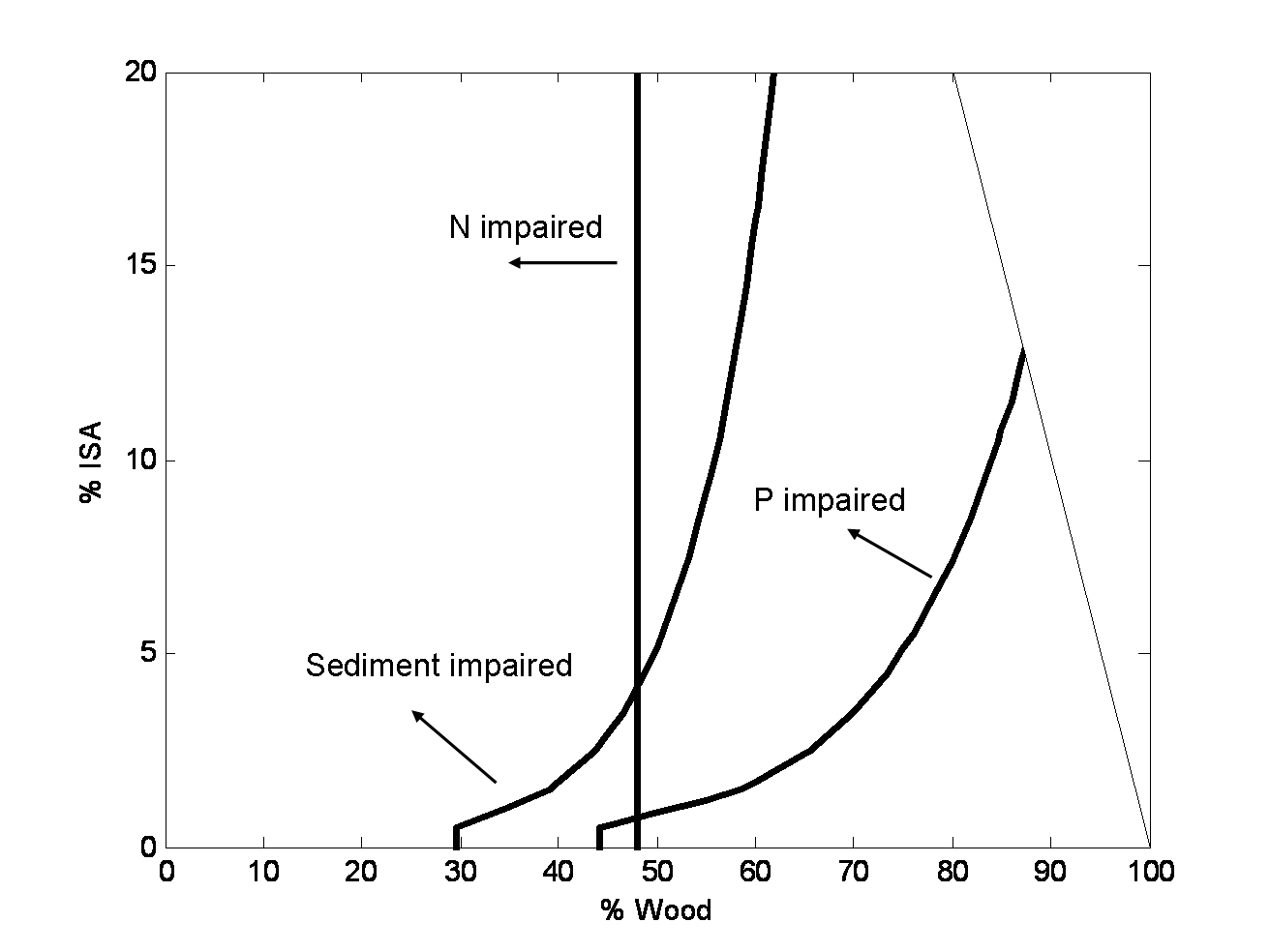
Before she came to work as my graduate student, Amy Haase wrote a master's thesis on water quality in Pennsylvania watersheds. Using data from about 40 watersheds, she and her masters advisor found empirical relationships between two land-use parameters: wooded area and impervious surface area (ISA), and three water quality parameters: concentrations of nitrogen, phosphorus and sediments. These concentrations were then compared with results from an earlier survey of ecosystem quality, to determine whether the land use in a given watershed was likely to lead to significant ecosystem impacts. They presented their results in the form of a GIS-driven web interface, that allowed stakeholders to predict water quality in their favorite watershed by tracing its boundaries on a map.
My contribution to published paper for this project was to plot pollutant concentrations against land use parameters using the empirical relationships. Each pollutant has a cutoff level above which the ecosystem is expected to be impacted (below). Phosphorus appears to be give the most stringent conditions on land use; it is strongly dependent on ISA and wooded area. As "phosphorus is the plant nutrient most often responsible for impairment of surface water" *, a watershed cannot be considered pristine unless it has at least 75% woodland and less than 5% ISA.
Note that nitrogen concentrations depend only on wooded area, and not on ISA. This is consistent with the use of nitrogen-based fertilizers in farming, which requires deforestation but not much paving. Sediments, which enter the water via erosion, are strongly dependent on wooded area and weakly dependent on ISA. Phosphorus, being found in fertilizers and detergents, is affected by urbanization as well as farming.
Figure Caption: Impairment thresholds for three pollutants as a function of wooded area (%wood) and
impervious surface area (%ISA). The diagonal line cutting off the upper right hand corner corresponds to
%wood + %ISA = 100.
